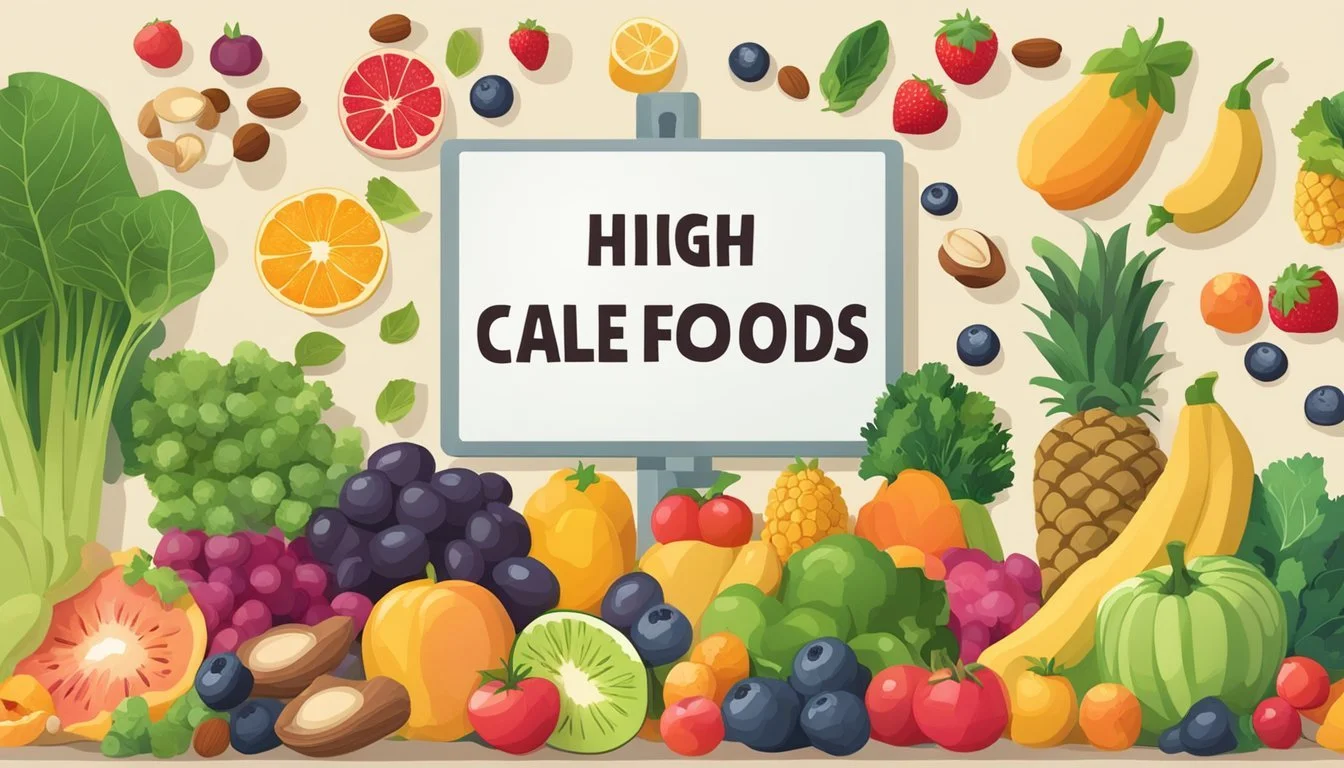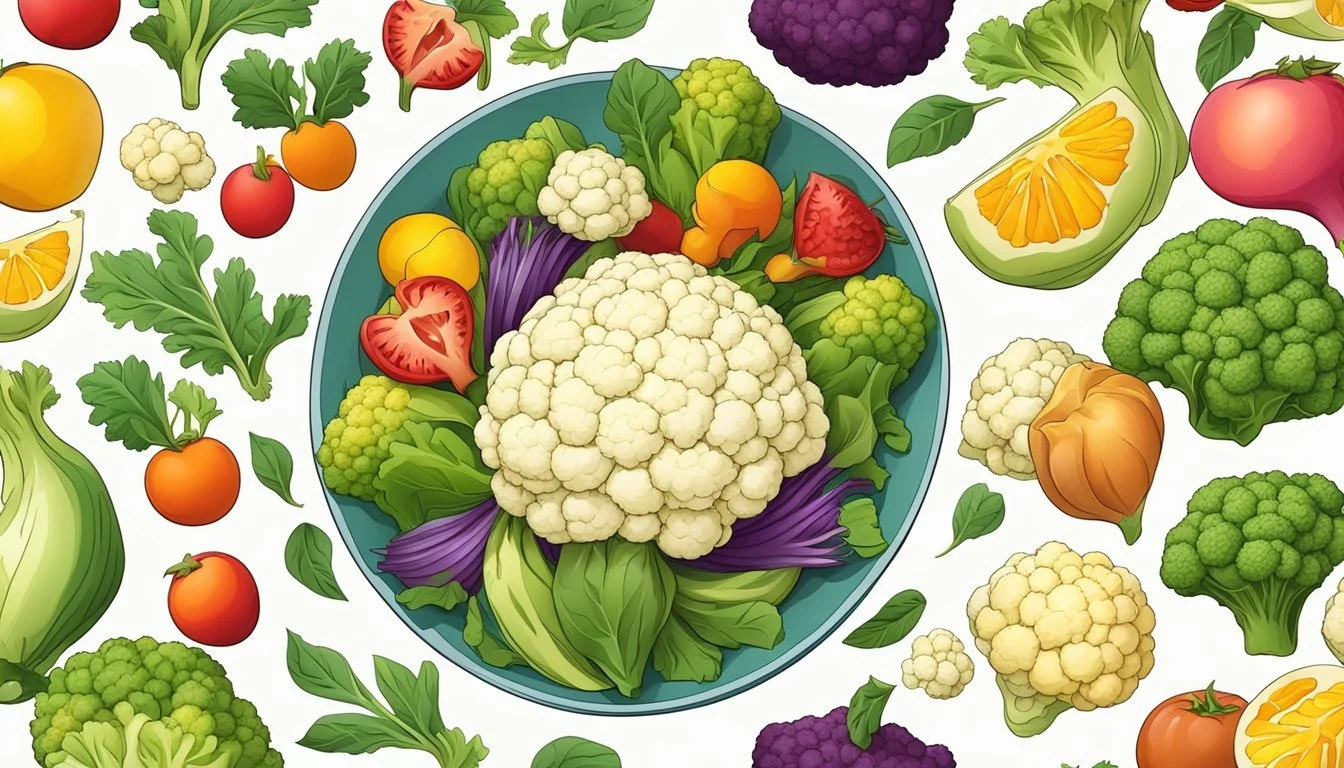Energizing Low-Calorie Foods
Top Choices for Sustained Vitality
Finding foods that are high in energy yet low in calories is crucial for individuals seeking to maintain a balanced diet while managing their weight. These foods provide the necessary nutrients and energy for daily activities without contributing to excessive calorie intake.
Choosing low-calorie, energy-dense foods allows people to eat larger portions and feel fuller without over-consuming calories. By focusing on these types of foods, individuals can enjoy a satisfying diet that supports both health and wellness goals.
1) Cucumber
Cucumbers are an excellent choice for those seeking foods that are high in energy but low in calories. A medium-sized cucumber, weighing approximately 300 grams, contains only around 45 calories. This makes it an ideal snack for those looking to maintain or reduce their caloric intake.
Furthermore, cucumbers are rich in essential vitamins and minerals. They provide vitamins K and C, which are important for bone health and immune function, respectively. A single cup of sliced cucumber contains about 95% water, contributing to hydration without adding significant calories.
Potassium is another key nutrient found in cucumbers, which helps in regulating blood pressure. Low in fat and carbohydrates, cucumbers are a suitable addition to a balanced diet, especially for those monitoring their macronutrient intake.
The high water content in cucumbers can also help in promoting a feeling of fullness, which can be beneficial for weight management. Easily incorporated into salads, smoothies, or eaten raw, cucumbers are versatile and convenient.
Cucumbers offer a refreshing, low-calorie option that supports overall health and wellness. Their nutritional profile makes them a standout choice for anyone aiming to boost energy levels while keeping calorie consumption low.
2) Spinach
Spinach is a powerhouse of nutrients with a low-calorie count, making it an excellent choice for those seeking energy without the extra calories.
A 100-gram serving of raw spinach contains only 23 calories. This leafy green is packed with fiber, vitamins, and minerals, contributing to its high nutritional value.
Spinach is rich in vitamin K, vitamin C, magnesium, and potassium. It also provides important antioxidants like lutein and zeaxanthin.
The fiber content in spinach aids digestion and helps maintain a feeling of fullness. This makes it a beneficial addition to a balanced diet.
Incorporating spinach into meals can boost nutrient intake while keeping calorie consumption low. It's versatile and can be used in salads, smoothies, and cooked dishes.
3) Berries
Berries are an excellent choice for anyone seeking foods high in energy but low in calories. They provide an array of essential nutrients and antioxidants.
Blueberries, for example, offer a great source of vitamin K and fiber, with one cup containing about 84 calories. They are low in fat and loaded with vitamins like C and K.
Strawberries are another great option. One cup of whole strawberries holds 85 milligrams of vitamin C, surpassing the recommended daily amount for both men and women. They are also low in calories, making them a suitable addition to a healthy diet.
Raspberries provide an excellent source of dietary fiber, with 8 grams of fiber per cup and only 64 calories. They are rich in vitamins and antioxidants, supporting overall health and well-being.
Berries like blackberries and other similar varieties follow the same pattern. They are nutrient-dense while being low in calories. These berries offer vitamins A, C, and K, as well as essential minerals like manganese.
Incorporating berries into a daily diet can contribute significantly to maintaining energy levels without the added burden of excessive calories. Berries can be enjoyed fresh, in smoothies, or as toppings for various dishes, adding both flavor and nutritional value.
4) Zucchini
Zucchini is a versatile vegetable known for being high in energy while remaining low in calories. It packs a lot of nutrients in a low-calorie package, making it an ideal food for those looking to maintain or lose weight.
A single cup of sliced zucchini contains about 19 calories and just over 1 gram of dietary fiber. This contributes to a feeling of fullness without adding many calories to the diet.
Zucchini is also rich in vitamins and minerals. It provides a significant amount of vitamin C and manganese, both important for overall health. It has about 324 milligrams of potassium, which helps maintain normal blood pressure levels.
Zucchini can be consumed in various ways. It can be grilled, sautéed, or even spiralized into noodles as a low-calorie alternative to pasta. Its mild flavor makes it a versatile addition to many dishes.
Moreover, zucchini has anti-inflammatory properties and can contribute to improved digestion. These health benefits, combined with its low-calorie content, make zucchini a great choice for an energy-boosting yet calorie-efficient food.
Given that it is easy to incorporate into meals, zucchini stands out as a highly beneficial food for health-conscious individuals.
5) Tomatoes
Tomatoes are a nutritious and low-calorie choice, perfect for those seeking to maintain energy without adding excess calories. A small 100-gram raw tomato contains only about 18 calories.
These vibrant fruits are composed of 95% water, making them hydrating and refreshing.
Tomatoes are high in vitamins and minerals. They provide a good source of vitamin C, vitamin A, vitamin K, and folate.
The fiber content aids in digestion and helps maintain a feeling of fullness. They also contain antioxidants like lycopene, which can protect against cellular damage.
Incorporating tomatoes into daily meals can be simple. They can be added to salads, used in sauces, or even enjoyed on their own.
Low in fat and rich in beneficial nutrients, tomatoes are an excellent option for energy-conscious eaters.
6) Bell Peppers
Bell peppers are an excellent choice for anyone looking to consume food that is high in energy but low in calories. They provide essential nutrients while keeping calorie intake minimal.
One raw, medium-sized bell pepper contains about 31 calories. This makes bell peppers a great addition to a low-calorie diet.
Bell peppers are packed with vitamins and minerals. They are particularly high in vitamin C, which is essential for a healthy immune system. Just one red bell pepper can provide up to 158% of the recommended daily value of vitamin C.
In addition to vitamin C, bell peppers also contain vitamin A, potassium, and fiber. The fiber content helps maintain digestive health and can aid in weight management.
They are composed mainly of water, making them hydrating and refreshing. With around 92% water content, bell peppers can help keep you hydrated.
Bell peppers are versatile and can be enjoyed both raw and cooked. Their mild, sweet flavor complements a wide variety of dishes, making them easy to incorporate into daily meals.
Due to their low glycemic index, bell peppers are also suitable for individuals monitoring their blood sugar levels. They do not cause rapid spikes in blood glucose.
7) Asparagus
Asparagus is a standout among foods that are high in energy but low in calories. This green vegetable provides a rich array of nutrients while being incredibly low in calories.
A half-cup serving of asparagus contains just 20 calories. Alongside its low-calorie count, asparagus delivers 2.2 grams of protein, making it a valuable addition to a balanced diet.
Asparagus is also a good source of fiber, offering 3.6 grams per cup. This helps support digestive health and regular bowel movements.
Trace amounts of fat, only 0.2 grams per half-cup serving, further support its classification as a low-calorie food. Asparagus is also rich in vitamins and minerals, including vitamins A, C, E, and K, as well as folate.
When considering nutrient density, asparagus stands out. It provides essential nutrients without significantly increasing calorie intake, making it ideal for those seeking to manage their weight while maintaining energy levels.
8) Celery
Celery is a well-known, low-calorie food that is often associated with weight loss diets.
One medium stalk of celery contains fewer than 6 calories. This makes it an excellent choice for those looking to reduce their calorie intake while still consuming a satisfying amount of food.
Celery is high in fiber, which aids in digestion and can help you feel full longer.
A cup of chopped celery, for instance, contains only 16 calories yet provides 6% of the daily fiber requirement. Fiber is crucial for maintaining a healthy digestive system and can assist in controlling blood sugar levels.
Celery is composed mainly of water, with water making up about 95% of its weight.
This high water content not only keeps calorie counts low but also helps keep the body hydrated. Hydration is key in maintaining overall health and supporting bodily functions. Additionally, celery is rich in potassium, vitamins, and antioxidants.
Incorporating celery into a balanced diet can contribute to weight management and overall health.
9) Cauliflower
Cauliflower is a versatile and nutritious vegetable, often hailed as a superfood. Its low calorie content makes it an excellent choice for those seeking to maintain or lose weight without sacrificing nutritional value.
A medium-sized head of cauliflower contains approximately 146 calories. This vegetable is rich in fiber, which promotes a healthy digestive system and can aid in weight management.
Cauliflower is not only low in calories but also packed with essential vitamins and minerals. It is a good source of vitamins C, K, and B6, as well as folate, magnesium, and potassium.
Another advantage of cauliflower is its high water content. This contributes to satiety, helping individuals feel full and reducing the likelihood of overeating.
Its versatility in cooking makes cauliflower a popular substitute for higher-calorie foods. It can replace starchy ingredients like rice, potatoes, and even pizza dough, offering a lower-calorie alternative without compromising on taste.
10) Broccoli
Broccoli stands out as a nutritious vegetable, combining high energy with low-calorie content. A cup of raw, chopped broccoli contains about 30-35 calories. This makes it a great option for those looking to maintain energy levels while keeping calorie intake in check.
Broccoli is primarily composed of water (almost 90%), which helps in hydrating the body without adding many calories. It has about 7% carbohydrates, 3% protein, and almost no fat, making it a balanced choice for anyone focused on a healthy diet.
This vegetable is rich in essential vitamins and minerals. For example, one cup of broccoli provides around 89 mg of vitamin C, fulfilling approximately 149% of the daily recommended intake. Additionally, it offers high levels of vitamin K and folate, essential for overall health.
Broccoli also contains a significant amount of dietary fiber—1.8 grams per cup, aiding in digestion and maintaining gut health. It’s a versatile vegetable that can be eaten raw or cooked, though some nutrients are better preserved when it’s consumed fresh.
This balance of high nutrient density and low calories underscores why broccoli is often regarded as a superfood. Incorporating it into meals can contribute to a healthier and more balanced diet.
Understanding Energy Density
Energy density is a measure of the number of calories in a specific weight of food. High-energy, low-calorie foods allow for larger portions without excessive calorie intake, which can aid in weight management and satiety.
Caloric Content Versus Nutrient Density
Caloric content refers to the amount of energy provided by food. Foods with high energy density pack more calories per gram. Nutrient density, on the other hand, measures the vitamins and minerals a food provides relative to its caloric content. Foods like fruits and vegetables often score high on nutrient density while being low in energy density.
Grapes, for instance, offer fiber and vitamins with fewer calories compared to a cup of raisins. This means that choosing low-energy, nutrient-dense foods can help meet nutritional needs without consuming too many calories.
Benefits of High-Energy, Low-Calorie Foods
High-energy, low-calorie foods can help in controlling hunger and managing weight. For example, foods high in water and fiber, such as asparagus and air-popped popcorn, make you feel full without packing on extra calories. These foods allow for larger portions that are satisfying yet low in calories.
Benefits include:
Enhanced satiety: Feeling full longer helps reduce overall calorie intake.
Improved nutrient intake: Choosing nutrient-dense foods ensures meeting daily vitamin and mineral needs.
Weight management: Larger portions of low-calorie foods aid in maintaining or losing weight effectively.
Incorporating these foods into daily meals can promote a healthier lifestyle while keeping calorie intake controlled.
Metabolism and Weight Management
Metabolism is the complex process by which the body converts what you eat and drink into energy. It plays a crucial role in how the body maintains energy balance and manages weight.
Impact on Basal Metabolic Rate
Basal Metabolic Rate (BMR) refers to the number of calories the body needs to carry out basic physiological functions at rest, such as breathing, circulating blood, and maintaining body temperature. BMR accounts for about 60-75% of the total calories burned each day. Factors influencing BMR include age, gender, muscle mass, and genetics.
Muscle tissue is more metabolically active than fat tissue, meaning it burns more calories at rest. Therefore, increasing muscle mass through strength training can elevate BMR. Age also affects BMR; it typically decreases as we grow older due to loss of muscle mass and hormonal changes.
Role in Weight Loss and Maintenance
A high metabolic rate allows the body to burn more calories at rest and during activity, making weight management easier. Conversely, a slower metabolism means fewer calories are burned, requiring a reduction in caloric intake to prevent weight gain.
Effective weight management requires understanding and managing these metabolic differences. Diets that are high in protein can help maintain muscle mass, thereby sustaining a higher BMR. Engaging in regular physical activity not only burns calories but also boosts metabolism temporarily, making weight loss more achievable and weight maintenance more sustainable.
Incorporating high-intensity interval training (HIIT) and resistance training can enhance metabolic rate. Moreover, adequate sleep and proper nutrition are essential in supporting metabolic health, facilitating weight loss, and maintaining an ideal body weight.
Tips for Incorporating These Foods
Incorporating energy-boosting, low-calorie foods into your diet can provide sustained vitality while helping you manage your weight. These tips will focus on effective meal planning and combining these foods with other nutrient-dense options for optimal energy.
Meal Planning Strategies
Effective meal planning starts with selecting a variety of energy-boosting, low-calorie foods. Aim to include lean proteins like broiled salmon, which offers both energy and satisfying flavor. Additionally, incorporate fruits such as apples, blueberries, and bananas, which are convenient for snacking and provide essential nutrients.
It's also beneficial to keep a stock of nuts and seeds. Almonds, walnuts, and chia seeds can be easily added to yogurt, salads, and smoothies, offering a quick energy boost. Evening meals could feature sweet potatoes, which provide sustained energy release.
To ensure all-around nutrition, consider preparing meals in advance. A day might include a breakfast with oatmeal topped with fruits and nuts, a lunch featuring a leafy green salad with lean chicken, and a dinner with grilled vegetables and a protein source. Prepping meals reduces the temptation to reach for high-calorie, low-nutrient options.
Combining with Other Nutrient-Dense Foods
Pairing energy-dense, low-calorie foods with other nutrient-rich ingredients enhances their benefits. Sweet potatoes, rich in complex carbs, can be paired with grilled vegetables like broccoli and asparagus to create a balanced, nutrient-dense meal. Adding a portion of lean protein, such as chicken breast or tofu, helps sustain energy levels throughout the day.
Leafy greens, like spinach and kale, can be combined with legumes such as lentils or chickpeas. This combination not only boosts energy but also provides substantial fiber and protein. Mixing berries into low-fat yogurt or a smoothie can enhance the nutrient profile with antioxidants and probiotics.
Utilize healthy fats from sources like avocado or olives to round out meals. These fats should be used sparingly but can make salads and grain bowls more satisfying and energy-dense without adding excessive calories. Incorporate whole grains such as quinoa or brown rice for an additional energy source that complements vegetables and lean proteins.










